Smerinthus jamaicensis,
the Twin-spotted Sphinx
Smerinthus jamaicensis
smeh-RIN-thuhsmmjah-may-KEN-sihs
(Drury, 1773)
Sphinx
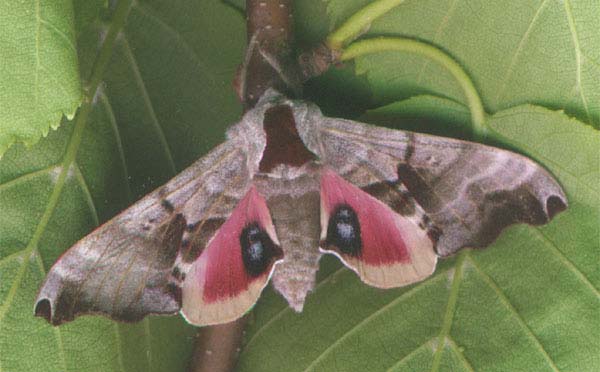
Smerinthus jamaicensis male by Bill Oehlke
This site has been created by
Bill Oehlke at oehlkew@islandtelecom.com
Comments, suggestions and/or additional information are welcomed by Bill.
TAXONOMY:Family: Sphingidae, Latreille, 1802
Subfamily: Sphinginae, Latreille, 1802
Tribe: Smerinthini, Grote & Robinson, 1865
Genus: Smerinthus Latreille, 1802
Species: jamaicensis (Drury, 1773)
MIDI MUSIC
......It's a Wonderful World......
copyright C. Odenkirk
ON.OFF
<bgsound src="world.mid" LOOP=FOREVER>
| |
DISTRIBUTION:
Smerinthus jamaicensis, the Twin-spotted Sphinx (wingspan 60-85 mm), is widely distributed
across North America and is found everywhere except in the southern half of western California. It has been taken as far north as the
Yukon.
I took the first male Smerinthus jamaicenis of season at a light on June 1, 2000, in Montague, P.E.I.. Weather has been
very cool and wet.
Smerinthus jamaicensis closely resembles Smerinthus cerisyi, but jamaicensis
is much smaller with larger blue patches on more vibrant and
deeper purple in the lower wings. Also note the complete (i.e. outer margin to outer margin) off-white arc just below the forewing apex.
In S. cerisyi the lower portion of the arc does not return to the outer margin.
There is some confusion about the specimen type location for this species. S. jamaicensis has not been reported in the Antilles, which includes the
island of Jamaica, except perhaps in the original description where Jamaica is indicated. However, there are very reputable suggestions (Rothschild and Jordan, 1903)
that the "Jamaica" in the original description, probably refers to Jamaica, New York, as opposed to the island of Jamaica.
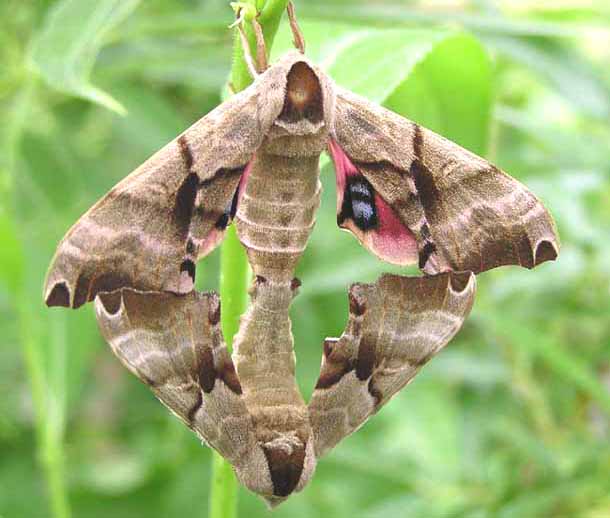
Smerinthus jamaicensis, pairing, courtesy of Hynek Habal copyright
Visit Smerinthus jamaicensis, Chaseburg, Vernon County, Wisconsin, May 3, 2012, Dan Jackson
Visit Smerinthus jamaicensis, La Crosse County, Wisconsin, May 5, 2015, Dan Jackson
Visit Smerinthus jamaicensis male, Eau Claire County, Wisconsin, 12:30 am, May 19, 2011, courtesy of Ian Miller.
Visit Smerinthus jamaicensis male, Athol, Worcester County, Massachusetts,
June 4, 2011, courtesy of Dave Small.
Visit Smerinthus jamaicensis, Los Lunas, Valencia County, New Mexico,
July 29, 2009, courtesy of Tracey L. Ballou.
Visit Smerinthus jamaicensis male, Greenfield Center, Saratoga County, New York,
August 5, 2010, courtesy of Brandon Capasso.
FLIGHT TIMES:
The Twin-spotted sphinx is single brooded in the northern portions of its range
with moths on the wing from early June to early August.
In Louisiana there are at least five broods from
late May through November.
ECLOSION:
Moths eclose at night from subterranean pupae which have wiggled to the surface.
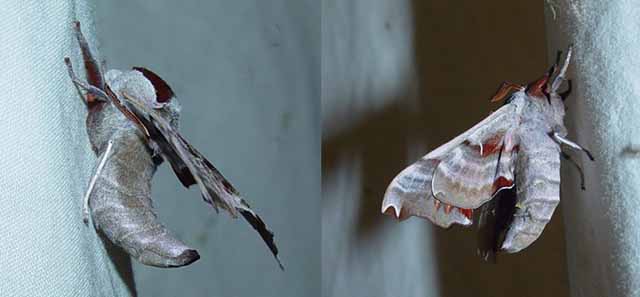
The curved abdomen is a clear sign that this moth is a
male. Females of the various "eye-sphinxes" rest with the abdomen
hanging straight down. Images courtesy of Tim Dyson, Peterborough, Ontario.
SCENTING AND MATING:
The females call the same night and
pairing can last for up to twenty hours.
Male antennae are quite large, and males rest with their abdomens
arced as in the image below.
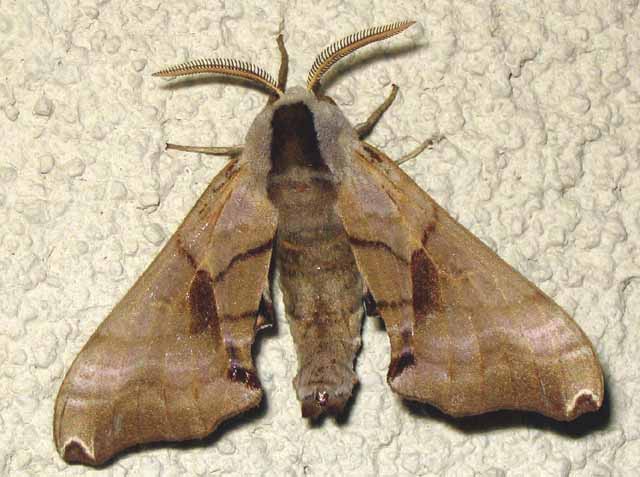
Smerinthus jamaicensis, Guelph, Ontario, July 23, courtesy of Chris Lee.
EGGS, LARVAE, PUPAE:
Pale green eggs are deposited singly or in pairs
on host plant foliage.Larvae feed upon many forest trees including birches and cherries,
but are expecially fond of poplars and willows. | 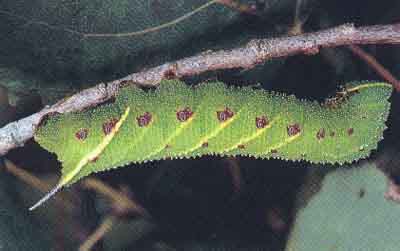
Photo courtesy of David L. Wagner |
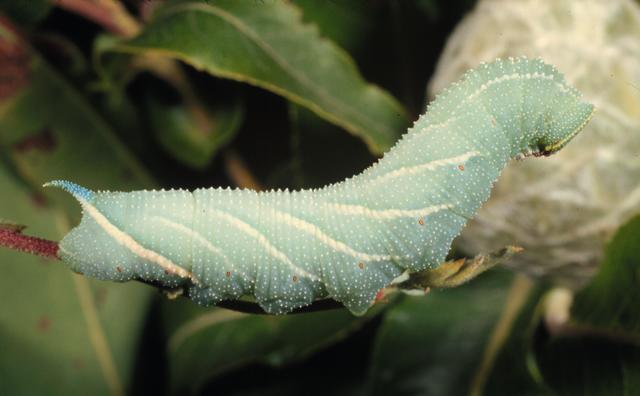
Smerinthus jamaicensis courtesy/copyright
David Wagner.
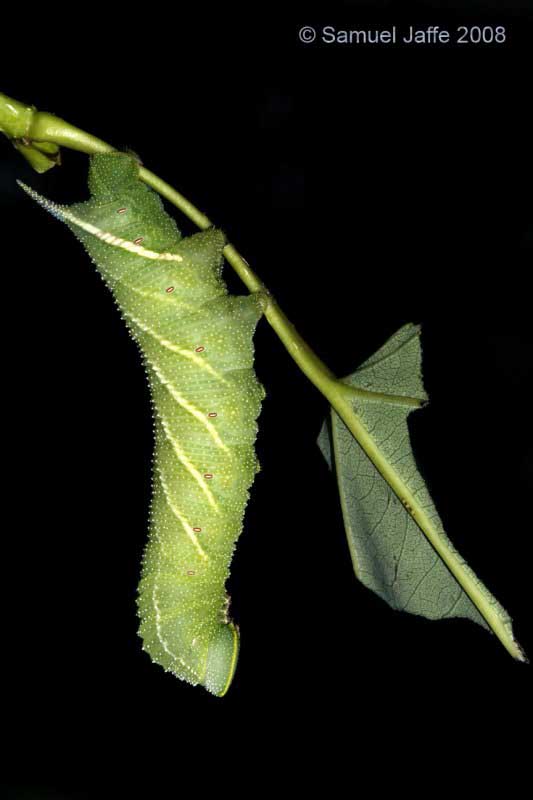
Smerinthus jamaicensis, fifth instar, Fowl Meadow, Readville, Suffolk County, Massachusetts,
on aspen/poplar, September 24, 2008, courtesy/copyright of Sam Jaffe.
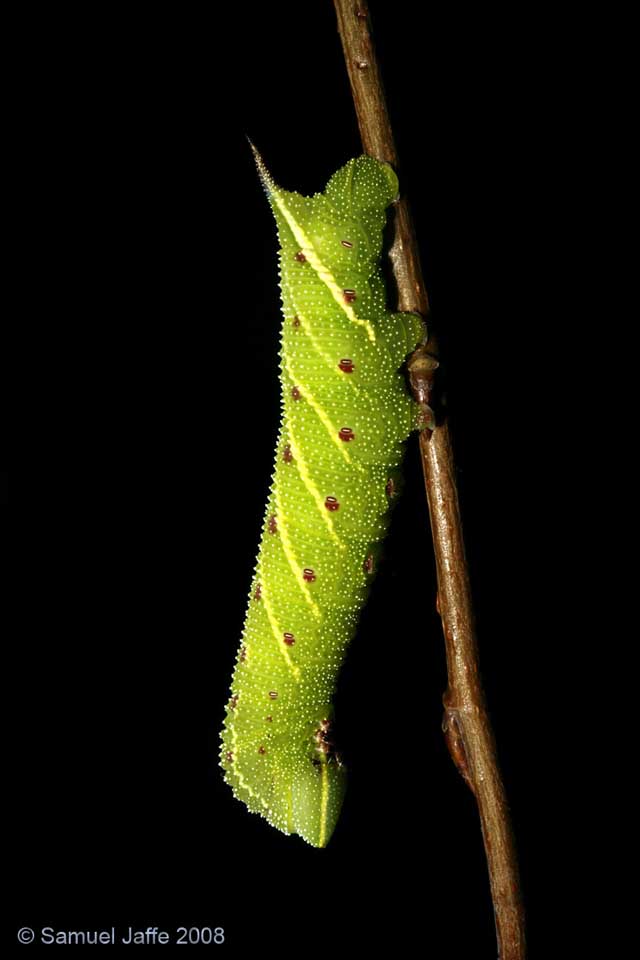
Smerinthus jamaicensis, fifth instar, Fowl Meadow, Readville, Suffolk County, Massachusetts,
on aspen/poplar, September 24, 2008, courtesy/copyright of Sam Jaffe.
Smerinthus jamaicensis larvae can show considerable variation.
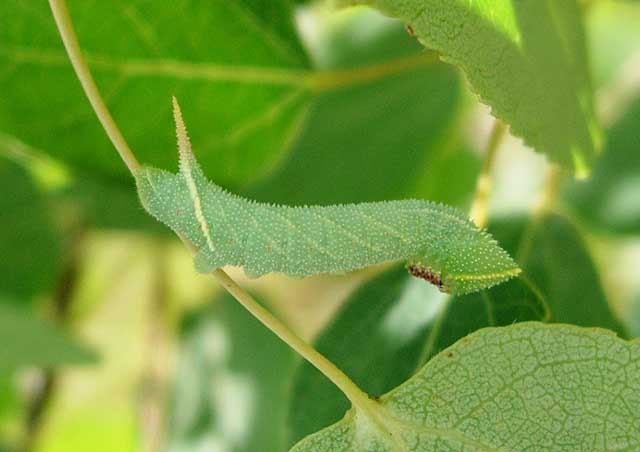
Smerinthus jamaicensis third instar, British Columbia,
courtesy of Ben Trott.
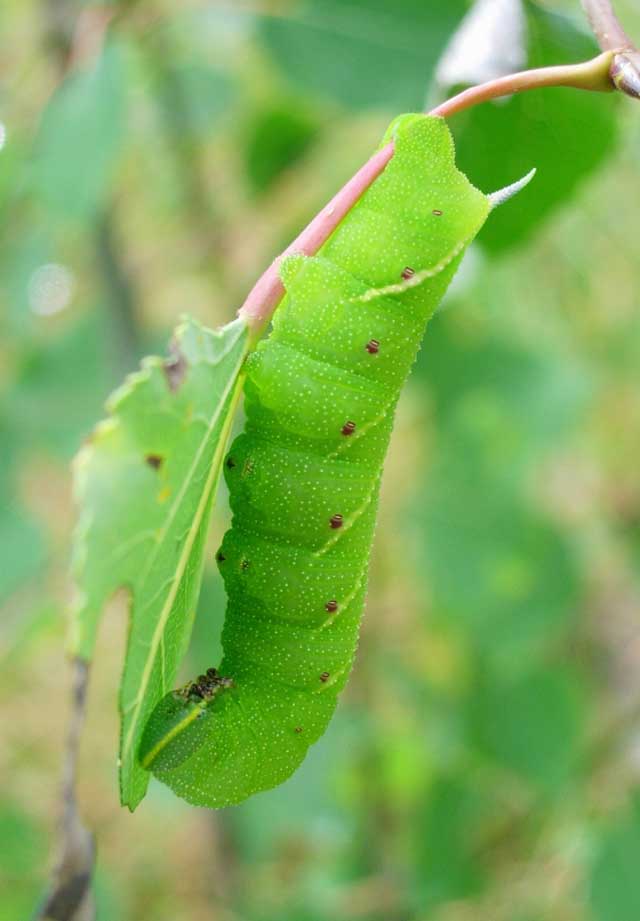
Smerinthus jamaicensis fifth instar, British Columbia,
courtesy of Ben Trott.
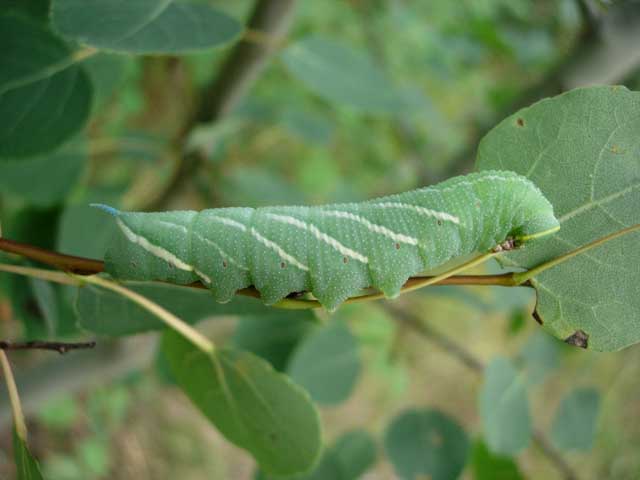
Smerinthus jamaicensis fifth instar, British Columbia,
courtesy of Ben Trott.
Foodplants:
| Large-toothed/Bigtooth Aspen
|
Return to U. S. A. Table
Return to Main Sphingidae Index
Return to Smerinthini Tribe
Use your browser "Back" button to return to the previous page.
This page is brought to you by
Bill Oehlke and the
WLSS. Pages are on space rented from Bizland. If you would like
to become a "Patron of the Sphingidae Site", contact Bill.
Please send sightings/images to Bill. I will do my best to respond to
requests for identification help.
Enjoy some of nature's wonderments: Saturniidae cocoons. Cocoons of these
giant silkmoths are for sale in fall and winter. Large, beautiful moths emerge in the spring and summer.
 | 
Show appreciation for this site by clicking on flashing butterfly to the left.
The link will take you to a page with links to many insect sites. |












